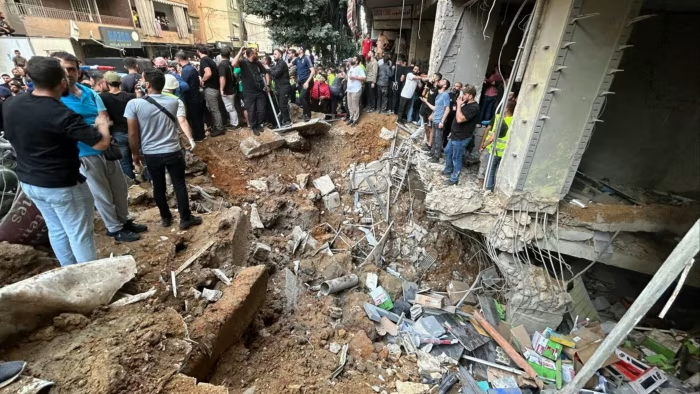The longstanding Israeli policy of classifying and fragmenting Palestinians has been a cornerstone of its approach to control and maintain dominance in the region. However, the cracks in this divisive strategy are becoming increasingly apparent, especially in the wake of the genocidal war in Gaza. In this piece we delve into Israel’s decades-old classification policy, its attempts to divide Palestinians, and how these efforts are faltering in the face of the resilient spirit that unites a people yearning for freedom.
The Genesis of Israel’s Classification Policy: A Historical Tapestry of Control
To truly grasp the intricacies of Israel’s classification policy and its evolution over time, we must journey back to the early days of the Israeli state and the foundations laid for a system designed to regulate, categorize, and ultimately control the lives of the Palestinian population.
Post-1948: Birth of the Israeli State
In the aftermath of the 1948 Arab-Israeli War, which resulted in the establishment of the State of Israel, a profound demographic shift occurred. The expulsion and displacement of hundreds of thousands of Palestinians paved the way for a new social and political landscape. The Israeli leadership, seeking to consolidate its control over the territory, initiated policies aimed at shaping the demographic composition of the newly formed state.
Control Through Population Registry
Central to this endeavor was the establishment of a population registry. In 1952, the Israeli government introduced the Population Registry Law, a foundational piece of legislation that laid the groundwork for the systematic classification of individuals based on their ethnicity, nationality, and residency status. This registry became a linchpin of the classification policy, offering a tool for meticulous control and surveillance.
Within the borders of the newly formed state, a sizable Arab minority remained. Israel’s classification policy extended beyond the delineation of Palestinians in the occupied territories. The Arab minority, constituting about 20% of the population, found themselves subjected to internal distinctions that further emphasized the ethno-national hierarchy envisioned by the state.
Residency and Movement Restrictions
For Palestinians living within the newly drawn borders of Israel, residency status became a crucial determinant of rights and privileges. Residency permits were selectively granted, restricting movement and access to certain areas. These measures, ostensibly framed as security precautions, were integral to the broader classification policy, segregating communities and limiting interactions between Jewish and Palestinian populations.
The 1967 Six-Day War marked a turning point, leading to the occupation of the West Bank and Gaza Strip. Israel extended its classification policy into these territories, introducing a complex web of permits, IDs, and administrative measures. Palestinians in the occupied territories faced increasing restrictions on their movement, access to resources, and even the right to build or expand homes—a form of control embedded in the classification apparatus.
Over the years, Israel fortified its classification policy through a series of laws and administrative measures. The introduction of identity cards, differentiating between Israeli citizens, residents of East Jerusalem, and Palestinians in the West Bank and Gaza, became a tangible manifestation of this policy. Legal distinctions entrenched in the bureaucracy reinforced the broader narrative of separateness and hierarchy.
The Oslo Accords: Fragmentation as a Political Tool
The Oslo Accords in the 1990s introduced a new layer of complexity. While ostensibly promoting the idea of Palestinian self-governance, these agreements entrenched a system of administrative divisions, with Areas A, B, and C demarcating varying degrees of Palestinian autonomy. This fragmentation not only mirrored but also perpetuated the classification policy, maintaining Israeli control over key aspects of Palestinian life.
In the digital age, technological advancements have provided new tools for implementing and expanding the classification policy. Biometric IDs, surveillance systems, and digital databases have become integral components, enabling more sophisticated monitoring and control. This modernization has not only streamlined administrative processes but has also raised concerns about privacy, civil liberties, and the potential for abuse.
While Israel’s classification policy was designed to fragment and regulate Palestinian lives, its unintended consequence has been the forging of a united resistance. The shared experience of navigating a labyrinthine bureaucracy, facing movement restrictions, and confronting discriminatory policies has fostered a sense of collective identity and resilience among Palestinians.
In tracing the genesis of Israel’s classification policy, from its nascent days to the present, a pattern of systematic control emerges. What began as a response to the demographic challenges posed by the creation of Israel has evolved into a multifaceted apparatus, shaping the lives of Palestinians both within and beyond its borders. Understanding this historical tapestry is crucial in unraveling the complexities of the Israeli-Palestinian conflict and the resilience exhibited by a people determined to transcend the divisions imposed upon them.
Fragmentation as a Tool of Control
The strategy of dividing and classifying Palestinians has been a tool of control, allowing Israel to maintain a semblance of order while asserting its dominance. By categorizing individuals based on residency, geographical location, or political affiliation, Israel sought to create divisions that could be exploited to weaken the collective will of the Palestinian people.
While the policy may have created an illusion of division, the reality on the ground tells a different story. Palestinians, despite facing physical barriers, checkpoints, and administrative hurdles, have consistently demonstrated an unyielding unity in the face of adversity. Attempts to sow discord among various Palestinian communities have often been met with a collective rejection of divisive tactics.
Gaza: A Crucible of Resistance
The genocidal war in Gaza serves as a crucible, exposing the shortcomings of Israel’s classification policy. The relentless bombardment and the humanitarian crisis have brought to light the shared suffering of Palestinians, transcending arbitrary divisions. The resilience displayed by Gazans in the face of immense adversity underscores the failure of attempts to fracture the Palestinian spirit.
The interconnectedness of the Palestinian struggle is a powerful force that defies attempts at division. The plight of Palestinians in Gaza resonates with those in the West Bank, East Jerusalem, and beyond. The shared experience of dispossession, occupation, and resistance forms a common thread that binds Palestinians together, making it increasingly challenging for Israel to enforce artificial separations.
Impact on International Perception
As Israel’s classification policy crumbles under the weight of its genocidal actions, the international community is witnessing the undeniable reality of a people united by a common cause. The global response to the atrocities in Gaza reflects a growing awareness of the failure of attempts to fragment and categorize Palestinians. Solidarity movements around the world are recognizing the shared struggle and standing against the divisive tactics employed by Israel.
Palestinian resilience has been a constant in the face of occupation and attempts at division. The determination to preserve cultural identity, maintain familial connections, and resist oppressive policies has created a resilience that transcends borders and classifications. The strength of the Palestinian people lies in their ability to resist not only physical occupation but also attempts to divide them along artificial lines.
Palestinian Identity
The concept of Palestinian identity, deeply rooted in a shared history and struggle, serves as a formidable force against divisive strategies. Attempts to erase or dilute this identity have only strengthened the resolve of Palestinians to resist and assert their right to self-determination. The failure of Israel’s classification policy is, in part, a testament to the enduring power of a united Palestinian identity.
As the world bears witness to the unfolding events in Gaza, there is a growing call for global solidarity with the Palestinian cause. The failure of Israel’s attempts to divide and control underscores the need for a collective response that recognizes the shared humanity and rights of the Palestinian people. It is a moment for the international community to stand against oppressive tactics and advocate for justice and equality.
Unity in the Face of Adversity
Israel’s decades-old classification policy, aimed at dividing and controlling Palestinians, is unraveling in the face of a resilient people united by a common struggle. The genocidal war in Gaza has laid bare the failure of these divisive tactics, exposing the strength of a collective identity that transcends artificial boundaries. As the international community grapples with the consequences of this conflict, the call for justice and solidarity resounds, affirming the enduring spirit of a people determined to overcome division and reclaim their rights.
| The views expressed in this article belong to the author and do not necessarily reflect the editorial policy of Al-Sarira. |







